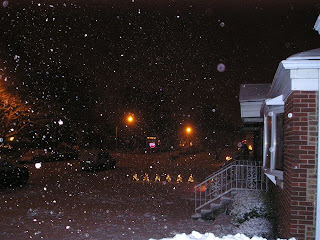 I have been watching the Willamette Valley weather from far away Chicago.
I have been watching the Willamette Valley weather from far away Chicago.We have both been having extreme weather.
I’m glad that for now, Mother Nature has returned us to ‘Normal’ winter weather.
Once we all have assessed our gardens, don’t panic! Plants are very resilient & stronger than we think. Broadleaf shrubs & trees can have more branch breakage from ice & wind. If you have broken branches, you can wait until the coldest weather is over to prune them. If you need to prune now, just remember to use clean, sharp tools & make good cuts.
For more tips, check out these videos on Winter Tools (http://www.youtube.com/v/L3zjaFxlKUs) & Winter Tree Care (http://www.youtube.com/v/-4NiQG7G1xE
I know I have Heavenly Bamboo (Nandina) with broken stems. This has happened before & in my garden, these shrubs can always use a trim. I will cut the stems all the way to the ground. This will promote new stems from the crown of the shrub.
I also have Rhodies that will need a few branches trimmed back. I will lose the flowers that would have come on the stems, but the plant will be OK. Once spring has arrived & new growth is emerging, I will check & see what plants need additional pruning & a shot of fertilizer or top dressing of rich mulch. This will help stimulate healthy new growth.
Sometimes winter takes it toll on our gardens. That is a fact of life in our gardens.
Shopping for new plants --- sounds like fun to me! Maybe I hadn’t planned on replacing a shrub or tree but it is exciting to have a space to plant a new variety!
I know that all the garden centers that Garden Time visits will be stocking up with new plants to tempt us this late winter & spring. It will be a great new project to try something new!
Judy


































 a great time last Saturday at Fir Point Farms. So what the weather was very cool & windy. So what that it sprinkled on & off all day. We all got to shop for plants, garden art & tasty treats!!!
a great time last Saturday at Fir Point Farms. So what the weather was very cool & windy. So what that it sprinkled on & off all day. We all got to shop for plants, garden art & tasty treats!!!



